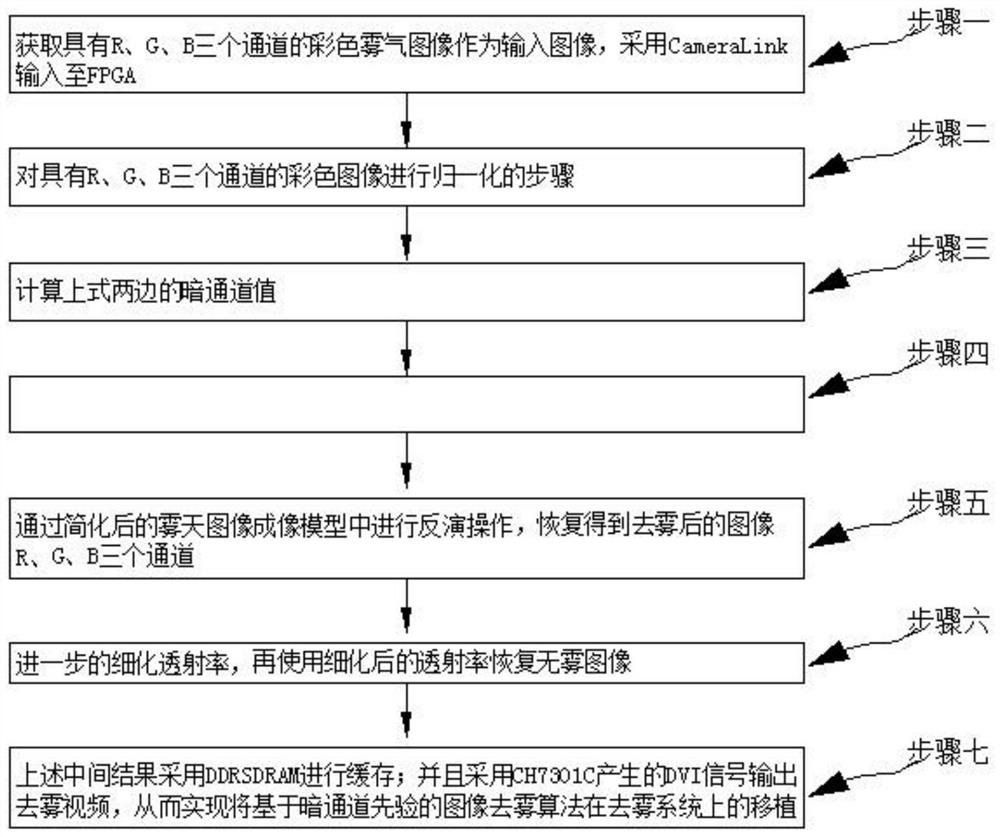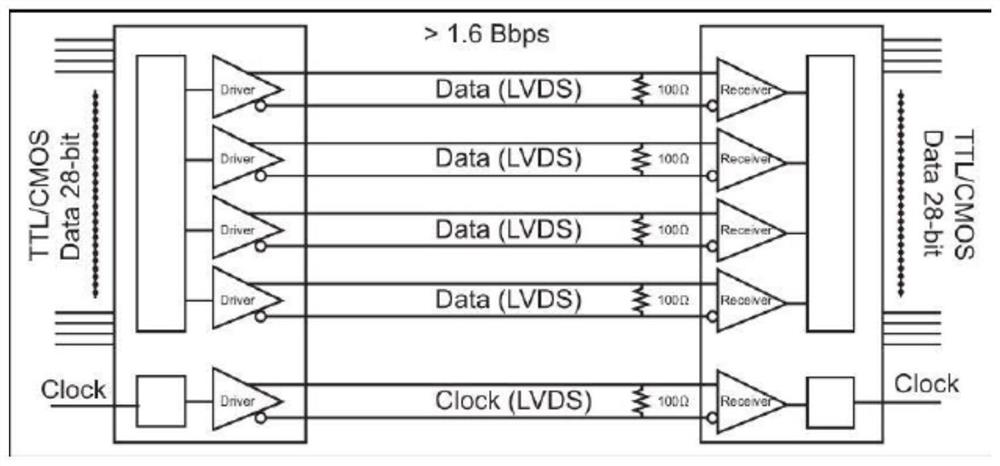Transplantation method of image defogging algorithm based on dark channel prior
A dark channel prior, dark channel technology, applied in the transplant field of image dehazing algorithm based on dark channel prior, can solve the problems of complex guided filtering, complex algorithm, etc., and achieve the effect of satisfying real-time performance
- Summary
- Abstract
- Description
- Claims
- Application Information
AI Technical Summary
Problems solved by technology
Method used
Image
Examples
specific Embodiment approach 1
[0048] A transplantation method of an image defogging algorithm based on dark channel prior in this embodiment, such as figure 1 The shown method flowchart, described method comprises the following steps,
[0049] Step 1. Obtain a color fog image with three channels of R, G, and B as an input image, and use CameraLink to input it to FPGA;
[0050] Step 2, the step of normalizing the color image with three channels of R, G, and B;
[0051] First, assuming that the atmospheric light value A is known, for the three channels R, G, and B of the simplified fog image imaging model, both sides of the equation are divided by the atmospheric light value A at the same time, and the result is expressed as:
[0052]
[0053] Step 3. Calculate the dark channel values on both sides of the above formula:
[0054] Assuming that the transmittance t(x) is a constant in any local area, that is, the window Ω(x), it is denoted as Then calculate the dark channel value on both sides of the a...
specific Embodiment approach 2
[0074] Different from Embodiment 1, in this embodiment, a method for transplanting an image defogging algorithm based on dark channel prior, the FPGA of the FPGA-based vehicle-mounted real-time defogging system selects the EP4CE10F17C8 type of CycloneIV of Altera Company As the main control chip, the input adopts CameraLink input, the output adopts the DVI signal output generated by CH7301C, and the intermediate results are buffered by DDR SDRAM;
[0075] in,
[0076] (1) The CameraLink protocol is developed on the basis of the ChannelLink protocol proposed by National Semiconductor Corporation of the United States, and has now become a standard protocol for image and video data transmission. The ChannelLink protocol consists of a transmitter and a receiver. The transmitter receives a 28-bit single-ended data signal and a 1-bit single-ended clock signal, and then the data signal and the clock signal are converted into a set of 4-bit differential data streams by the transmitter...
specific Embodiment approach 3
[0080] The difference from the first or second specific embodiment is that in this embodiment, a method for transplanting an image defogging algorithm based on dark channel prior, the method further includes the following steps,
[0081] By setting a fixed threshold to correct the transmission method, the steps of color distortion correction for foggy images containing sky or white areas are as follows:
[0082] Since the sky or white area of the foggy image is relatively bright, recording the sky or white area of the foggy image shows a high peak characteristic on the gray histogram. Use this feature to find the adaptive threshold and segment the sky or white Wait for the bright area and non-bright area; after that, design an adaptive correction function to improve the atmospheric dissipation function of the image, and dehaze these areas respectively. So as to solve the problem that the color of the bright area is distorted and the overall contrast of the image is reduced...
PUM
 Login to View More
Login to View More Abstract
Description
Claims
Application Information
 Login to View More
Login to View More - R&D
- Intellectual Property
- Life Sciences
- Materials
- Tech Scout
- Unparalleled Data Quality
- Higher Quality Content
- 60% Fewer Hallucinations
Browse by: Latest US Patents, China's latest patents, Technical Efficacy Thesaurus, Application Domain, Technology Topic, Popular Technical Reports.
© 2025 PatSnap. All rights reserved.Legal|Privacy policy|Modern Slavery Act Transparency Statement|Sitemap|About US| Contact US: help@patsnap.com



